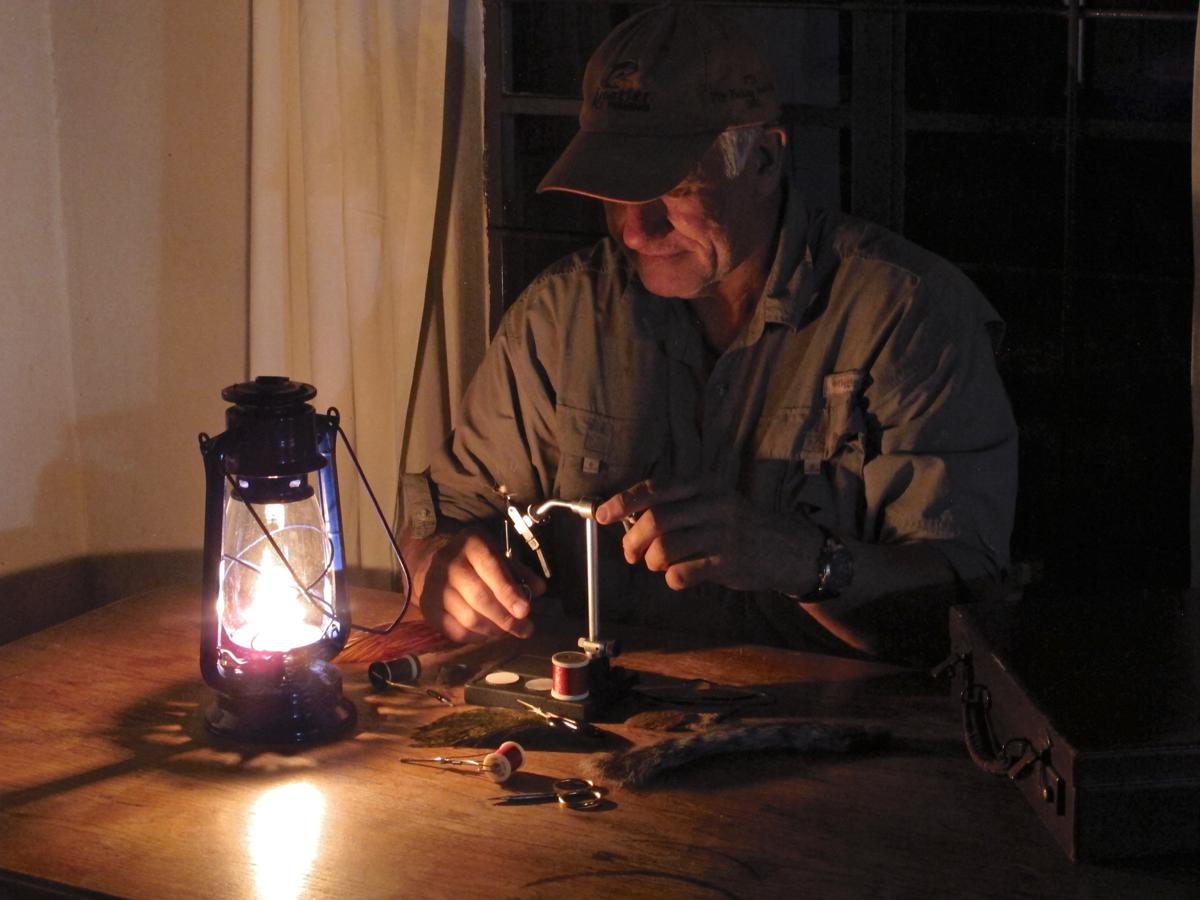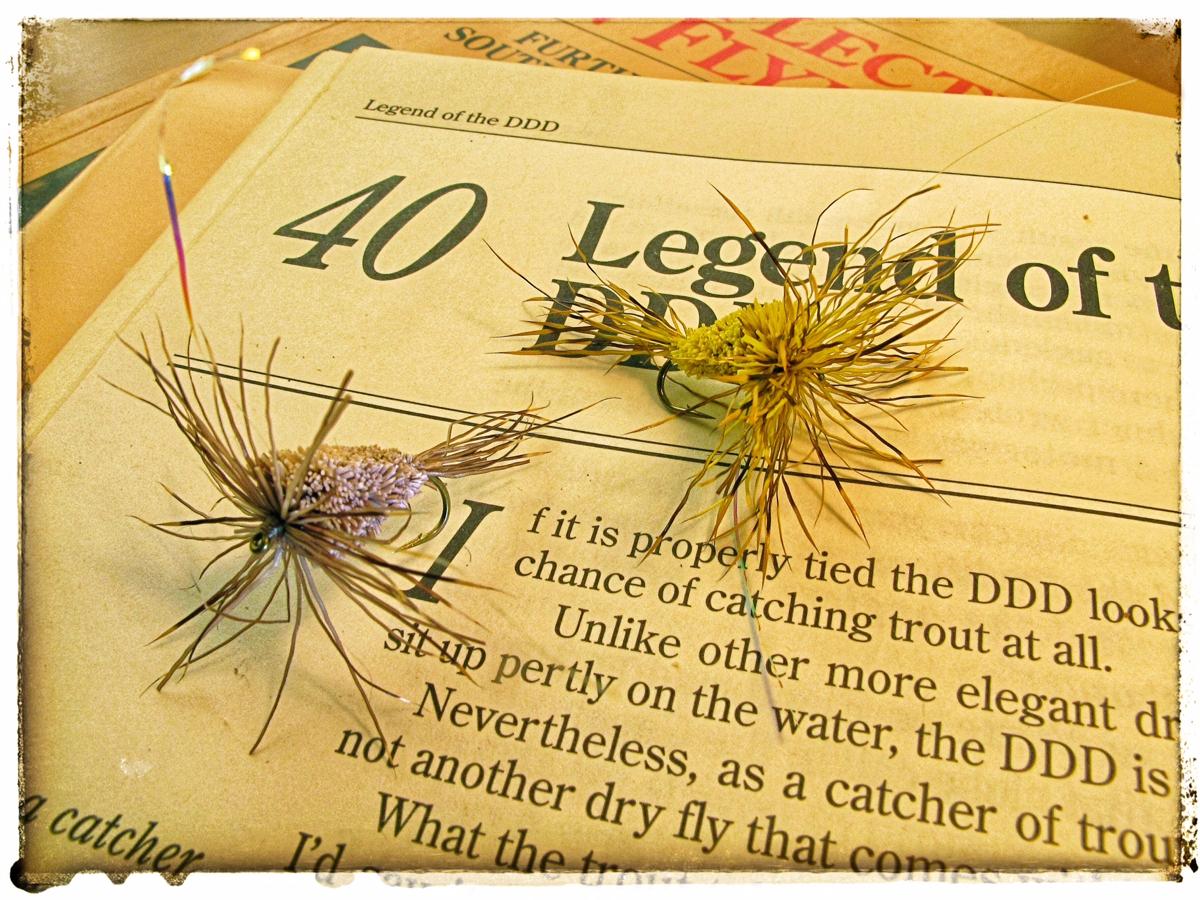
4 minute read
Heritage Flies - Part 4 Red-Butt Woolly Worm and the DDD.
Peter Brigg
The significance of the period from the early 1970s to the 1980s, when the direction and advancements in fly fishing and fly tying in South Africa were taking place, cannot be underestimated. It was a time when a group of flyfishers in the then Natal, were breaking new ground. John Beams, Tom Sutcliffe, Tony Biggs, Hugh Huntley and others whose innovative thinking contributed to many new techniques and fly tying styles suited to our local conditions. It was their pioneering work that influenced the future of fly fishing and tying in South Africa and the beginning of a move away from what until then, had largely been influenced by the English school of fly fishing.
Advertisement
Red-Butt Woolly Worm - the fly that ended the reign of the Walker’s Killer in the 1970s In the early 1970s the Walker’s Killer was toppled from its 20-year pre-eminence as the favourite wet fly by another, the John Beams Red-Butt Woolly Worm.
Encouraged by tales of big stillwater trout in the foothills of the Drakensberg Mountain range, Tony moved to Natal in the early 70s joining Tom in Pietermaritzburg.
Dean Riphagen described the Red-Butt Woolly Worm in The South African Fly-Fishing Handbook (New Holland, 1998), like this -
“This fly’s evolution in South Africa is interesting, particularly as it was first fished as a dry fly. John Beams had been fishing the Smalblaar River, which at the time was running high but clear. He was using a dry fly – a Wickham’s fancy – which, because of the heavy water, was unable to stay afloat for long. Despite this it worked well as a wet fly and accounted that day for several rainbows. John subsequently experimented with the colour of the pattern and, when he moved to the former Natal, he tried it in stillwater. Changes to the dressing followed: he tied it with a hackle stripped from one side to ensure a sparsely dressed pattern, and later added a hot-orange butt. Instead of using the conventional chenille popular at the time in American versions, he tied the body with dubbed seals’s fur. Eventually the pattern evolved to become the Red Butt Woolly Worm. It is a classic example of the fly tying philosophy of South Africans such as the late John Beams, Gavin Grapes and Tony Biggs in that it is tied with a slim body and a sparse, palmered hackle.”
Tom Sutcliffe says that the Red-Butt Woolly Worm was so favoured on the slower sections of the Mooi River, home to some very big brown trout, that few anglers used anything else.
John Beams had a big impact on South African fly fishing and his Natal Notebook newsletters, carried in Piscator in the 1970s were eagerly read and provide a useful chronicle of fly fishing in KZN in those formative years.

John Beams with Mark McKereth is from Tom Sutcliffe's photo archive.
The picture of this Red-Butt Woolly Worm was given to Peter Brigg as one possibly tied by John Beams, but not verified.

DDD – South Africa’s most significant dry fly - November 1976
I would rate the DDD as the most significant dry fly in the evolution of fly fishing in South Africa because it changed the course of dam fishing in this country. Previously dam anglers would fish off the wall or wade until waist-deep before starting to cast their sinking patterns on sinking lines. Tom Sutcliffe and Hugh Huntley were catching trout in water little more than knee-deep by casting the DDD ten metres back from the water’s edge with just a few feet of leader touching the surface of the dam. gave an example to his friend Bill Duckworth who regularly fished dams in the Dargle area of the Natal province and he started catching some huge fish on it. It was accordingly named the Duckworth Dargle Delight or DDD.
It was originally tied on size 8 - 14 hooks with a brown hackle and tail. In this form it was a wingless local version of American deer hair flies which evolved in the 1930s, such as the Irresistible tied by Joe Messinger of West Virginia and the Rat-faced McDougall popularised by Harry and Elsie Darbee in the Catskill Mountains of New York state.
The DDD is not unusual in its design but rather in its body material. It is made with the spun-and-clipped deer hair or fur of the klipspringer (Oreotragus oreotragus) which is South Africa’s only antelope with hollow hair. Tom first tied it in November 1976 as a beetle imitation on the Umgeni River, but it really achieved fame as a stillwater floater. He It became a truly indigenous South African pattern when Hugh Huntley replaced the rooster hackle and tail with klipspringer hair. “What the trout take it for is anybody’s guess, but probably represents a large terrestrial insect of sorts, most likely a beetle, grasshopper or moth”, Tom says.
Just what the Doctor ordered...A double dose of DDD's from Dr Tom Sutclife's vice. Photo: Peter Brigg.

A step-by-step photographic sequence on the tying procedure can accessed on Tom’s Spirit of Flyfishing website.
http://www.tomsutcliffe.co.za/fly-fishing/fly-tying/item/205-tying-the-ddd.html










